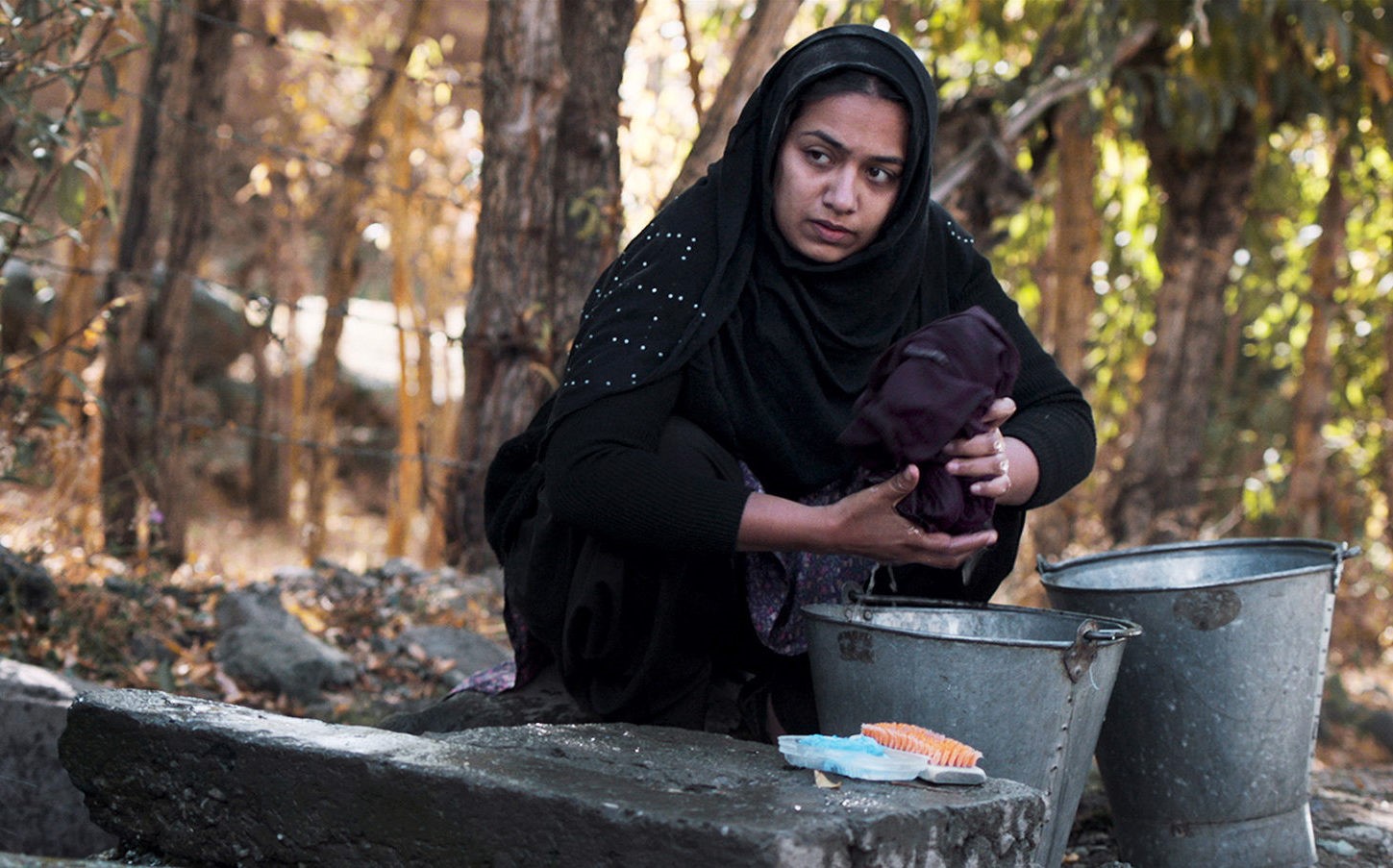Review by Dr Ayesha Ahmad, Global Health Correspondent, Medical Humanities Journal
Widow of Silence, d: Praveen Morchhale, India, 2018 (Urdu with English subtitles)
Winner of ‘best film award’ in Kolkata Indian Film Competition
Showing at the London Indian Film Festival 2019, http://londonindianfilmfestival.co.uk/2019-festival-programme/
The silence during the first few scenes of ‘Widow of Silence’ is impassable; there is no way into the story. The film opening shows a methodical tying of rope around the torso of an old lady, who is sitting in a wooden chair just in view of a small window, by a young girl. The process is slow and the only sounds are the viewer’s questioning thoughts about why such an act would be taking place towards an older woman so still and resolute in her posture. The young girl’s comforting touch on the woman’s shoulder before leaving gives reassurance that the act is not malicious, and that somehow the silence contains love.
Aasiya (Shilpa Marwaha), the mother of the young girl, is a half-widow trying to rightfully claim her husband’s death certificate and his land. She does not need to express her emotions because she does not have the energy to do so; instead we observe Aasiya maintaining her duties as a nurse in the local hospital, as a mother, and as a carer to the old lady who has now emerged to be Aasiya’s mother-in-law. Aasiya is fighting the corrupt and misogynistic registrar to obtain a death certificate for her husband who was taken by the police and never came back. The registrar clearly enjoys vocalising his perverse power without shame.

The words that do break through are from Aasiya’s allied company; her daily taxi driver who sings his sorrows and romanticizes the union of the Kashmir Valley as an embodied heaven and hell through the rhymes he recites. Winding through the roads, his poem verses embody the heart of the locals’ suffering from war while appreciating their homeland beauty. Aasiya’s work companion also seeks to provide Aasiya with heart-felt advice, extracting Aasiya’s story from her silence and relating it to her own. There is a brutality to the prophecy that there is no hope; no missing person has ever returned to the Kashmir Valley. The land too becomes another silent story, the vivid beauty telling tales of those who are no longer there.
Aasiya’s daughter evolves from a child to a questioning young woman, wondering whether her father was a ‘bad man’ yet remaining solid in her silent defence of her family when she is abused in school and called a ‘half-daughter’.
There is a lone scene where Aasiya tells the story of her philosophised existence to her daughter, a poignant legacy of truth and honesty that is underscored with inevitable death and hopelessness. At one point, Aasiya remarks that eventually everyone leaves creating a sense that should suffering be spoken of, there will be inevitable loss.
As the journeys in the poetic taxi continue the narrative of divided lands and families rise and are threaded through the characters, their hardship-lined faces and basic living, returning home each day, climbing up a rickety old ladder to an old mud hut.
Aasiya and her daughter suffer another loss at the death of the grandmother. The mother who died mourning the unknowns of her son’s life or death brings a release from suffering. Silence was an act of survival; a tortured heart could not even cry, but death seems to break the clouds of tears never fallen. Suffering, after all, can be finite. The limbo has come to an end.
Silence became so heavy that its weight starts to create fear in the viewer that Aasiya will fall; the escalating fear for her land and for her life reminds the viewer that our cradle and our death place can sometimes become the same space. The story concludes with Aasiya’s act of dignity shattering the silences and filling her Valley with hope; hope that now Aasiya and her daughter will live—and tell—their own story.